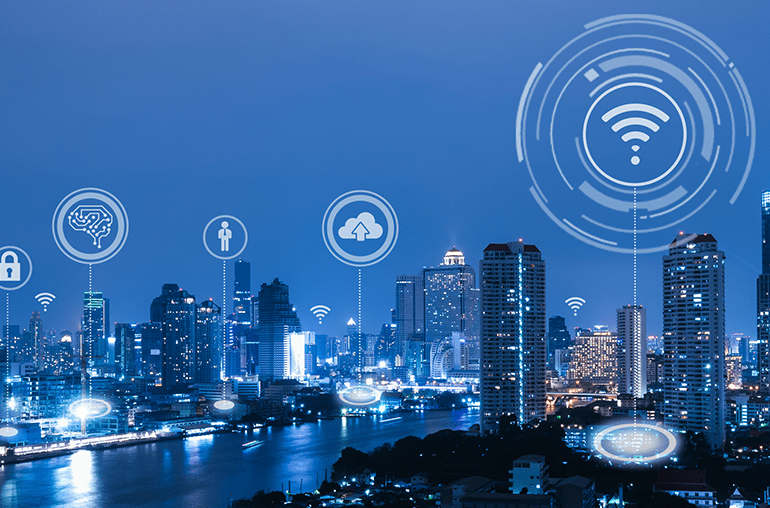
Each year, people’s lives become increasingly connected. Digital assistants, smart homes and the like were only possible in the realm of science fiction not too long ago. Consumers are starting to see the Internet of Things (IoT) expanding into more and more aspects of their daily lives. It is fair to say that the IoT has become ubiquitous to the point where people no longer question the addition of connectivity and smart features to devices.
From an enterprise perspective, IoT sprawl has created unique challenges and opportunities which companies will have to either overcome or embrace. As workers increasingly rely on connected devices and technology makes its way into more unexpected places, companies have to balance the wants of the consumer and employees against the needs of the shareholder. To that end, here are five enterprise IoT predictions for the year ahead.
ESG Isn’t Going Anywhere Anytime Soon
While Environmental Social Governance (ESG) has been a political flashpoint recently, stewardship of the planet isn’t going to disappear from the boardroom radar in the near future. Companies will begin to take a hard look at their ESG initiatives and realize that the first step toward managing an effective ESG program is understanding the nuances of what makes up their total carbon footprint. To do this, they will need data. Not just data on their own operations, but data on the operations of their suppliers and vendors.
The IoT also provides valuable data to these companies in their efforts to minimize their overall impact on the environment. The next trend in ESG will be leveraging data from the IoT to refine products and processes to have a positive effect on ESG initiatives. IoT devices can provide a constant positive feedback loop where, for instance, when leveraged with machine learning (ML), predict and implement the most efficient control of a device. This need for connectivity amongst IoT devices brings us to the next two major predictions for 2023.
Satellite Connectivity Will Be Included In More Devices
Connecting to a satellite is no longer constrained to specialty or luxury devices. Anytime that there is a need for a connection from a stationary device, satellites may provide easy connectivity while simultaneously shifting some of the load to different frequency bands. While the promise of nationwide mobile technology is a promise, there are still remote areas where satellite communications are vital.
Smart cities are poised to be one of the largest adopters of this shift to satellite communications, particularly with new Satellite networks being launched with support for standard 3GPP cellular connectivity, making them a cell tower from the sky. Building smart city IoT around satellite communications eliminates the need for either costly hard-wired IoT networks or increased local cellular congestion. There will also be a major shift on the cellular side of communications.
One SIM To Rule Them All
The wide adoption of software-based SIMs, or eSIMS will represent a fundamental shift in the mobile connectivity industry. Manufacturers are starting to embrace eSIMS for a variety of reasons. First, including a SIM on a chip will reduce the overall carbon footprint of manufacturers. They will no longer have to produce physical SIM cards, which frequently end up as trash before the device that they were meant for is out of commission. Also, this will remove the requirement for creating SIM trays in devices, which can simplify the design and production process and reduce costs overall.
Finally, one of the largest boons to the shift to eSIMS is the increased level of security that they provide over physical SIM cards. Since an eSIM is provisioned remotely, it eliminates SIM cards as a threat vector.
Security Will Continue To Be At The Top Of Businesses’ Minds
In what sounds like old news at this point, cybersecurity will continue to be at the forefront of business decision-making. What is different this year is the rise of artificial intelligence (AI) and ML.
AI and ML are making malicious actors more efficient and potentially more effective when carrying out attacks. Natural Language Models such as ChatGPT have opened new directions of attack as well as lowering the overall threshold for creating effective malicious code.
Additionally, the changing legislative landscape around privacy will spur companies to take a hard look at the way that they collect, use, and retain sensitive personal data. This may require a complete redesign of products, procedures, or in fact, entire business models.
Managed Services Providers Will Aim To Manage Skill Gaps
Finally, it is no secret that the tech labor market is in a state of upheaval. Many companies are reducing or restricting their workforces as they seek efficiency or profits. This exodus of talented tech professionals has created severe knowledge gaps that must be addressed.
Managed Services Providers will step in and provide that expertise on an as-a-service basis. This will allow companies to purchase the skills and expertise that they need without having to take on the additional overhead of hiring and training additional staff. In the end, this will also allow businesses to focus on their key objectives while allowing experts to manage the technology behind the scenes.
2023: A Year Of Transition
2023 will see significant changes in the IoT landscape, but those changes will ultimately be tempered by the needs of individual businesses. Companies will continue to leverage the IoT to seek efficiency in their operations, ESG initiatives and end-user experience. They will also adopt and expand on recent technologies such as AI and ML while striking a balance between security and privacy. Companies will also address gaps in critical skills caused by economic uncertainty by embracing as-a-service solutions.
This article originally appeared on Forbes.com.


